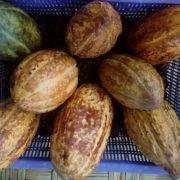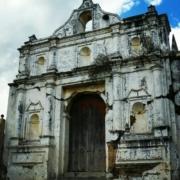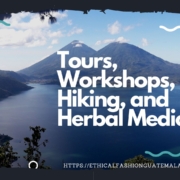San Marcos, What Happened?
San Marcos, What Happened?
I chose to create this post to make the San Marcos community aware of the changes that have occurred in this Mayan hamlet over the years.
San Marcos, like most Mayan settlements on Lake Atitlan, was practically unscathed by the impact of ExPats when I first arrived 17 years ago. Unfortunately, everything has changed in terms of what San Marcos is today.
San Marcos, What Happened?
San Marcos is currently known as the Hippie Highway. Those who take a healing course online for a few weeks come to San Marcos and open a shop giving some form of healing, but nothing like the abilities of Mayan healers.
Cacao Ceremonies in Maya culture and history are significant. We find posts on Facebook groups in San Marcos offering Cacao Ceremonies, which are either parties or some Gringo dressed as a Mayan Shamnon making the offerings.
A location to stay in San Marcos once locally owned businesses dominated, now expats who have come, rented homes from locals or purchased them, and listed them on Airbnb as if they were their own. Airbnb has enabled people to earn money from homes they do not own and to take advantage of local hotel owners.
San Marcos, What Happened?
The village is no longer a Mayan settlement. Years ago, as you stepped off a boat and strolled along the boardwalk to the center of town, you were greeted by residents selling local handicrafts.
Today that has all changed with bars, restaurants, Bitcoin, and a coffee shop that looks like a Starbucks on your way to the main plaza. Locals have left, or local employees are paid less than the minimum wage.
I’ve always felt that when we visit a location like Lake Atitlan, we should treat ourselves as pilgrims, respect the indigenous culture, and engage with and offer our gifts for the benefit of everybody. I rarely visit San Marcos, and travelers who visit the lake and stop in San Marcos feel the same way. What happened, San Marcos?
San Marcos La Laguna is a village on the western shore of Lago Atitlán in the Sololá Department of Guatemala. The village is northwest of three volcanos Volcán San Pedro, Volcán Tolimán, and Volcán Atitlán.
The village has an outdoor amphitheater and a few hostels. San Marcos connects to other lakeside communities by boat and a narrow road. The nearest city is Panajachel on the northern side of Lago Atitlán.[1]
The town sits at an elevation of 1,585 metres (5,200 ft); the lowest elevation is the lakeshore at 1,562 metres (5,125 ft).
It is a small village of 2200 inhabitants; the majority of the population are Kaqchikel-speaking indigenous Mayans.

 Ethical Fashion Guatemala
Ethical Fashion Guatemala Ethical Fashion Guatemala
Ethical Fashion Guatemala
 Ethical Fashion Guatemala
Ethical Fashion Guatemala Ethical Fashion Guatemala
Ethical Fashion Guatemala
 Ethical Fashion Guatemala
Ethical Fashion Guatemala Ethical Fashion Guatemala
Ethical Fashion Guatemala Ethical Fashion Guatemala
Ethical Fashion Guatemala
Leave a Reply
Want to join the discussion?Feel free to contribute!